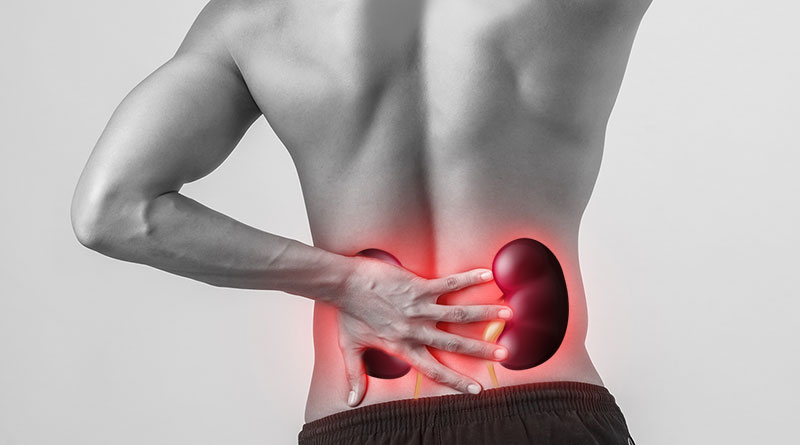Urinary tract stones or urolithiasis are pathological conditions that are often disputed in terms of incidence, etiology, pathogenesis and treatment. Urinary tract stone disease was known in Babylonian times and Ancient Egypt. One proof has been found stone in a mummy’s bladder. The disease can hit anywhere, including Indonesia. There are often found cases of bladder stone disease in developing countries even in developed countries, more cases of upper urinary tract stone disease are reported. It is caused by the influence of nutritional status, physical activity, and sports carried out by the community.
Urinary tract stone formation is thought to be caused by infection, obstruction, dehydration, urinary tract disorders, congenital conditions, metabolic diseases, and conditions that have not been revealed (idiopathic). One disease related to the urinary tract is urinary tract stones. In Indonesia, there are still many patients, but complete data on the profile of this disease patients are still not widely reported. Indonesia shows that the prevalence of Indonesian population suffering from kidney stones is 0.6% or 6 per 1000 population.
Urinary stones are the third largest disease in the field of urology after urinary tract infections and benign prostate enlargement. Epidemiologically, there are two factors, intrinsic and extrinsic factors that facilitate the formation of urinary tract stones. Intrinsic factors are hereditary, age, and sex. Heredity, this disease can be inherited from their parents and can have the greatest risk to be affected by this disease. The age of patients around 30-50 years is the majority of patients affected by urinary tract stone disease and the number of male patients is three times more than women because the male urethra is longer than women. Extrinsic factors are geography, climate and temperature, water intake, diet, and occupation. Some regions show higher incidence rate so they are called stone belt, while the Bantu area in South Africa hardly found any urinary tract diseases. Indonesia is a country that has many islands with high salt content and high lime.
The urinary system (urinalysis system) consists of filtration, reabsorption, and augmentation. Filtration is the process of filtering blood in the glomerulus especially nephrons so that substances that are not needed by the body can be removed. Reabsorption is the process of re-absorbing substances that are still needed in the primary urine that occurs in the Proximal Tubular Contour Tubule. Augmentation is the process of adding residual substances and urea that begin to occur in the Distal Tubule. Urine starts from the kidney tubules to the ureter and reaches the bladder. If the bladder is fully filled, the bladder wall will be depressed causing urge to urinate and urine come out through the urethra. The composition of urine consists of water, salt, urea, and the rest of the other substances, such as bilirubin pigment which causes the color and smell.
The urinary system studies the excretory organs consisting of two kidneys that produce urine, two ureters that carry urine from the kidneys to the bladder, one bladder where the urine is collected, and one urethra which removes urine from the bladder.
This research is a retrospective descriptive study conducted at Urology Department Dr. Soetomo Hospital Surabaya. Data obtained from medical records in January 2016 – December 2016 diagnosing urinary tract stones, with a total of 62 medical records. Age, sex, major complaints, type of urinary tract stone, location of urinary tract stones were included as variables. The study showed the ratio of male to female BSK patients is 33:29. Meanwhile, most patients are in 46-60 year age group (52%); with low back pain (79%); uric acid (48%); location of stones in the kidney (65%).
Urinary Tract Stones are often found in Indonesia. Symptoms can include low back pain or even colic, accompanied by plait, hematuria, fever. In fact, most of us don’t realize that such symptoms can lead to urinary tract stones. Age, sex, major complaints, type of urinary tract stones, and location of urinary tract stones are variables that can support the diagnosis of urinary tract stones. It is necessary to do a supporting examination to determine kidney function, location of stones, urinalysis, and urine culture can be done if there are signs of infection.
Author: Reza Kurniawan, Tarmono Djojodimedjo, Anny Setijo Rahaju
Details of this research available at:http://juri.urologi.or.id/juri/article/view/506
Kurniawan, R., Djojodimedjo, T., Rahaju, S. 2020. Profile of Patients with Urinary Tract Stone at Urology Department of Soetomo General Hospital Surabaya in January 2016-December 2016. Indonesian Journal of Urology, 27(1). https://doi.org/10.32421/juri.v27i1.506





